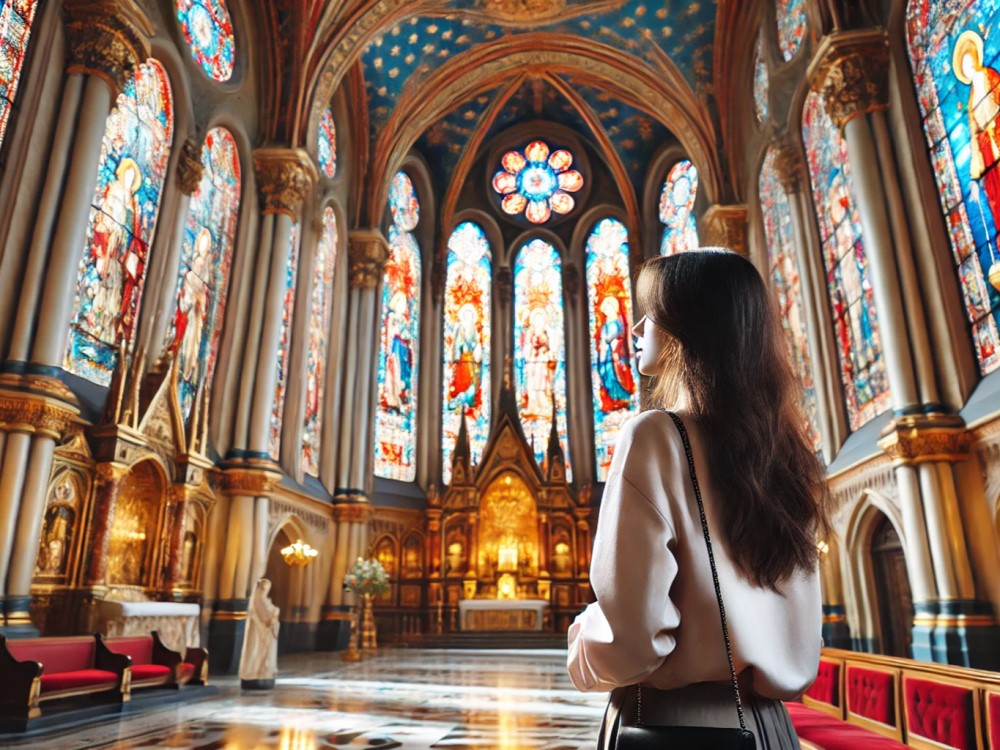
Uncovering Watford Historic Sites: An In-depth Exploration Guide
Watford, often celebrated for its vibrant cultural tapestry and modern amenities, also holds a rich and fascinating history waiting to be explored. The journey through Watford historic sites offers more than just a glimpse into the past; it provides a deep understanding of the town’s evolution from a modest settlement to a bustling urban center. Whether you’re a history enthusiast or simply looking for a unique way to spend your day, exploring these historic landmarks will undoubtedly enrich your experience in Watford.
One of the most captivating aspects of Watford’s history is how seamlessly it blends with the present. Many of these historic sites are nestled within bustling areas that also cater to contemporary tastes. For instance, while you’re wandering through these historical gems, you might find yourself just steps away from the vibrant Watford food scene. The juxtaposition of old and new is striking, offering visitors the chance to immerse themselves in history before enjoying a modern culinary experience.
Watford’s historic sites are not just about ancient buildings and monuments; they are stories etched into the very fabric of the town. These sites offer insight into the lives of those who shaped Watford, from influential figures to everyday citizens whose contributions have been memorialized in stone and brick. As you explore, you’ll discover how these places have been meticulously preserved, allowing them to tell their tales to future generations.
For families visiting Watford, the town’s historic sites provide an educational yet engaging experience. Exploring these landmarks can be a fun and interactive way to teach younger generations about history. Coupled with family-friendly activities in Watford, your visit can be both informative and enjoyable, making it a perfect day out for all ages.
As you delve deeper into Watford’s history, you’ll uncover sites that span centuries, each with its own unique story. From medieval structures that have withstood the test of time to more recent historical buildings that reflect the town’s growth during the industrial era, each site contributes to the rich tapestry of Watford’s past. Whether it’s a grand estate or a humble cottage, each place has a significance that adds to the overall narrative of the town’s history.
The appeal of Watford’s historic sites lies not only in their architectural beauty but also in their ability to transport visitors back in time. As you walk through these sites, it’s easy to imagine the hustle and bustle of centuries past, where each brick and stone had its role in the daily lives of Watford’s residents. This immersive experience is what makes uncovering Watford’s historic sites such a rewarding endeavor.
Watford’s historic sites are more than just tourist attractions; they are gateways to understanding the town’s rich and diverse history. Whether you’re a local or a visitor, taking the time to explore these sites will give you a deeper appreciation of Watford’s heritage. So, lace up your walking shoes and prepare to step back in time as you uncover the hidden stories behind Watford historic sites.
St. Mary’s Church – A Medieval Marvel

One of the most significant historic sites in Watford is St. Mary’s Church, a stunning example of medieval architecture that has stood the test of time. Located in the heart of the town, St. Mary’s Church dates back to the 12th century, making it one of the oldest buildings in Watford. The church’s architecture reflects the various styles that have influenced its design over the centuries, from the Norman foundations to the later Gothic additions. The tower, which was added in the 15th century, is a particularly striking feature, offering a glimpse into the craftsmanship of the period.
The interior of St. Mary’s Church is just as impressive, with a range of historical artifacts and features that tell the story of the town’s religious and social history. The church houses several monuments and memorials, including a brass of Thomas Broughton, a notable figure from the 15th century, as well as a 16th-century wooden screen that has been beautifully preserved. The stained glass windows, some of which date back to the Victorian era, add a splash of color and light to the interior, depicting biblical scenes and figures.
Visiting St. Mary’s Church offers not just a look at the architectural beauty of the building but also an opportunity to explore the history of Watford through the lens of its religious heritage. The church has played a central role in the community for centuries, hosting important events and serving as a place of worship for generations of Watford residents. Today, it continues to be a focal point for the town, offering regular services as well as being a popular site for tourists and history buffs alike.
The grounds surrounding St. Mary’s Church are also worth exploring. The churchyard, with its ancient gravestones and mature trees, offers a peaceful retreat from the hustle and bustle of the town center. It’s a place where you can reflect on the passage of time and the generations of people who have lived, worked, and worshipped in Watford. Whether you’re interested in history, architecture, or simply looking for a tranquil spot to spend some time, St. Mary’s Church is a must-visit site that encapsulates the rich history of Watford.
Cassiobury House – The Lost Manor of Watford
No exploration of Watford’s historic sites would be complete without delving into the history of Cassiobury House, once one of the grandest manors in England. Although the house itself was demolished in the 1920s, the legacy of Cassiobury House lives on in the surrounding Cassiobury Park, one of Watford’s most beloved green spaces. The house was originally built in the 16th century for the Earls of Essex, and over the centuries, it underwent various expansions and renovations, becoming a magnificent example of English aristocratic architecture.
Cassiobury House was renowned for its grandeur and the beauty of its gardens, which were designed by some of the most famous landscape architects of the time, including Capability Brown. The house itself was a blend of Tudor, Jacobean, and Georgian architectural styles, reflecting the changing tastes and fortunes of its owners. The interiors were equally lavish, with rooms decorated in the latest fashions, featuring elaborate plasterwork, wood paneling, and fine furnishings. The house was a hub of social and political life, hosting royalty, dignitaries, and artists over the centuries.
The story of Cassiobury House is a tale of rise and fall, reflecting the broader social and economic changes in England. By the early 20th century, the upkeep of such a large estate had become financially untenable, leading to its sale and eventual demolition. Today, all that remains of Cassiobury House are a few scattered remnants, including parts of the original gardens and some architectural features that have been incorporated into newer buildings in the area.
Despite the loss of the house itself, Cassiobury Park remains a living tribute to the estate’s former glory. The park is one of the largest public spaces in Hertfordshire, offering a range of recreational activities for locals and visitors. Walking through the park, you can still get a sense of the grandeur that once defined Cassiobury House. The mature trees, expansive lawns, and meandering river reflect the park’s historical roots, offering a glimpse into the past while serving as a vital green space for the community today.
Exploring the history of Cassiobury House provides insight into the social and architectural history of Watford, revealing how the town’s landscape has been shaped by the legacies of its aristocratic past. Whether you’re a history enthusiast or simply enjoy a stroll through beautiful parkland, Cassiobury Park is a must-visit site that offers a unique connection to Watford’s historical heritage.
Watford Palace Theatre – A Cultural Landmark with a Rich History

Another key historic site in Watford that is well worth exploring is the Watford Palace Theatre, a cultural landmark that has been at the heart of the town’s entertainment scene for over a century. Opened in 1908, the theatre was originally designed as a music hall and quickly became a popular venue for a wide range of performances, from vaudeville acts to plays, operas, and films. The building itself is an excellent example of Edwardian architecture, with its distinctive façade and elegant interior reflecting the grandeur of the era.
The Watford Palace Theatre has a rich history of hosting notable performances and attracting famous artists. Over the years, it has evolved with the changing tastes of audiences, adapting to the different forms of entertainment that have emerged throughout the 20th and 21st centuries. The theatre has seen everything from silent films in its early days to modern plays and musicals, making it a dynamic and enduring part of Watford’s cultural heritage.
One of the unique aspects of the Watford Palace Theatre is its commitment to both preserving its historical legacy and embracing contemporary performance art. The theatre underwent a major renovation in the early 2000s, which restored many of its original features while also updating its facilities to meet modern standards. Today, the theatre boasts state-of-the-art lighting and sound systems, comfortable seating, and a versatile stage that can accommodate a wide range of productions. This blend of old and new makes the Watford Palace Theatre a perfect example of how historic sites can be preserved and revitalized for future generations.
Visiting the Watford Palace Theatre offers more than just a chance to see a show; it’s an opportunity to step back in time and experience a piece of Watford’s history. The theatre’s interior, with its ornate plasterwork, grand staircase, and original fittings, transports you to a bygone era of elegance and sophistication. At the same time, the theatre’s vibrant program of events ensures that there is always something new and exciting to see, from classic plays to cutting-edge performances.
For those interested in the history of performing arts, the Watford Palace Theatre also offers guided tours that provide a behind-the-scenes look at the building’s history and architecture. These tours reveal the stories of the actors, directors, and audiences who have passed through the theatre’s doors over the past century, offering a deeper understanding of the role the theatre has played in Watford’s cultural life.
In conclusion, the Watford Palace Theatre is not just a venue for entertainment; it’s a living monument to Watford’s cultural history. Whether you’re a theatre lover or simply interested in the town’s past, a visit to this historic site is a must. The theatre’s combination of historical charm and modern amenities makes it a unique and memorable destination for anyone exploring Watford’s rich heritage.
The Harlequin Shopping Centre – A Modern Hub with Historical Roots
While Watford is rich in traditional historic sites, it also has places where history and modern life intersect, such as the Harlequin Shopping Centre. Opened in 1992, the Harlequin (now known as Atria Watford) might seem like a purely contemporary location, but its roots are deeply intertwined with the history of Watford’s development as a commercial and social hub. The centre represents the evolution of the town from its market origins to a bustling urban area that balances the past with the present.
The location of the Harlequin Shopping Centre is significant, as it stands on land that has been central to Watford’s economy for centuries. The area was once home to the town’s historic market, which dates back to the medieval period and was a focal point for trade and commerce. Over the centuries, Watford grew from a small market town into a key commercial centre, thanks in part to its strategic location near London and its excellent transport links. The construction of the Harlequin Shopping Centre in the early 1990s marked a new chapter in Watford’s history, as the town adapted to the demands of modern retail and consumer culture.
Despite its modern appearance, the Harlequin Shopping Centre pays homage to its historical roots in various ways. The architecture of the centre incorporates elements that reflect Watford’s past, such as the use of traditional materials and designs that echo the town’s older buildings. Additionally, the centre has become a place where history and community come together, hosting events and exhibitions that celebrate Watford’s heritage. These events provide a platform for local historians, artists, and community groups to share their knowledge and passion for Watford’s past with a wider audience.
The Harlequin Shopping Centre is also home to a variety of public art installations and memorials that commemorate significant figures and events in Watford’s history. These pieces add a layer of historical context to the shopping experience, reminding visitors of the town’s rich heritage even as they enjoy the modern amenities of the centre. For example, the centre’s design includes references to Watford’s industrial past, particularly its role in the printing and brewing industries, which were once major employers in the area.
Visiting the Harlequin Shopping Centre offers a unique perspective on how Watford has evolved over the centuries. It’s a place where the old and the new coexist, offering a glimpse into the town’s past while serving as a hub for its present and future development. Whether you’re shopping, dining, or simply exploring, the Harlequin Shopping Centre provides an opportunity to experience Watford’s history in a contemporary setting.
The Harlequin Shopping Centre is more than just a place to shop; it’s a modern landmark that reflects the historical evolution of Watford. By blending elements of the town’s past with the conveniences of the present, the centre serves as a reminder of how Watford has grown and changed over the years. For those interested in the intersection of history and modern life, a visit to the Harlequin Shopping Centre offers a fascinating insight into the ongoing story of Watford.
Uncover the Rich History of Watford Through Its Historic Sites

Watford’s rich history is reflected in its diverse range of historic sites, each offering a unique glimpse into the town’s past. From the medieval splendor of St. Mary’s Church and the lost grandeur of Cassiobury House to the cultural significance of the Watford Palace Theatre and the modern history encapsulated in the Harlequin Shopping Centre, Watford is a town that beautifully bridges the old and the new.
St. Mary’s Church, with its centuries-old architecture, stands as a testament to Watford’s medieval roots, while the story of Cassiobury House, once a grand estate, speaks to the town’s evolving landscape and the shifts in its social and economic fabric. The Watford Palace Theatre, on the other hand, represents the town’s cultural heartbeat, showcasing its longstanding commitment to the arts and community engagement. Even the Harlequin Shopping Centre, a more recent addition, holds its own place in the narrative of Watford’s modern development, illustrating how the town has adapted to contemporary needs while preserving its historical essence.
Exploring these sites not only provides insight into Watford’s historical development but also deepens our understanding of how the town’s past continues to influence its present and future. Each site tells a story, adding layers to the rich tapestry of Watford’s history and highlighting the town’s resilience and adaptability through the ages.
Whether you’re a local resident or a visitor, uncovering Watford’s historic sites is a rewarding journey that reveals the layers of history that have shaped this vibrant community. By delving into these landmarks, you gain a deeper appreciation for how the town’s heritage continues to inform its identity, making Watford a place where history is not just remembered but actively experienced and celebrated.
Watford’s historic sites offer a fascinating exploration of the town’s past, providing both locals and visitors with a richer understanding of its evolution. The blend of old and new in Watford’s landscape serves as a reminder of the town’s enduring spirit and its ongoing journey through history. Embrace the opportunity to explore these historic treasures and discover the stories that have made Watford the vibrant community it is today.





